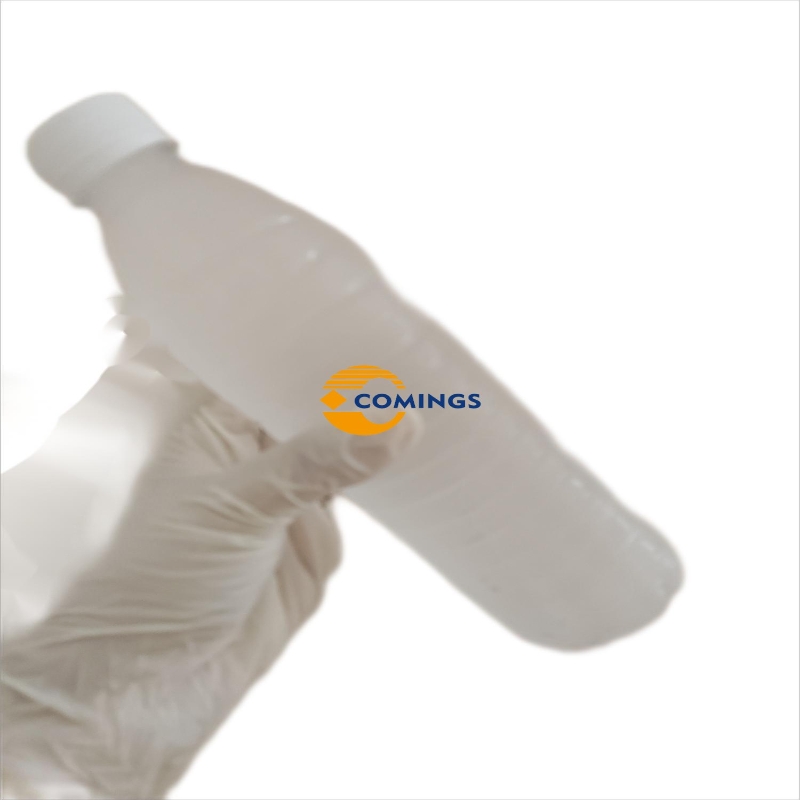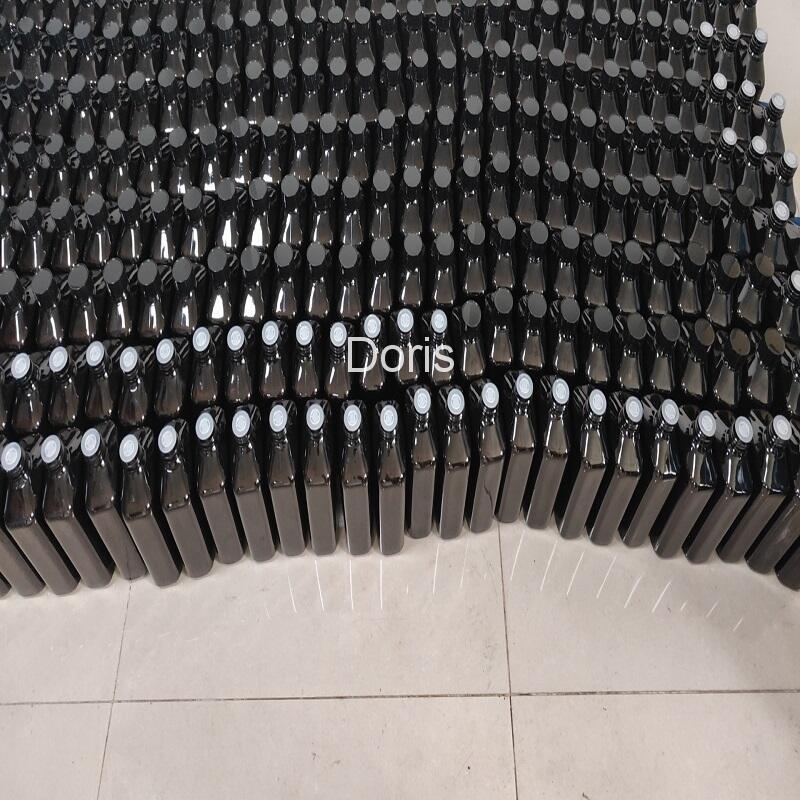-
Categories
-
Pharmaceutical Intermediates
-
Active Pharmaceutical Ingredients
-
Food Additives
- Industrial Coatings
- Agrochemicals
- Dyes and Pigments
- Surfactant
- Flavors and Fragrances
- Chemical Reagents
- Catalyst and Auxiliary
- Natural Products
- Inorganic Chemistry
-
Organic Chemistry
-
Biochemical Engineering
- Analytical Chemistry
- Cosmetic Ingredient
-
Pharmaceutical Intermediates
Promotion
ECHEMI Mall
Wholesale
Weekly Price
Exhibition
News
-
Trade Service
In 2016, the import and export of China's pesticide industry once again showed a situation of both volume and price declines.
The amount of imported and exported pesticides fell by 22.
89% and 37%, respectively.
After the low tide period of 2015-2016, the price of domestic crude drugs has gone through the second half of 2016.
The level of the original drug has returned to the level of the same period in 2014.
According to industry analysts, the price increase trend of the original drug will not stop
.
Prices have risen up and down, only reaching the level of the same period in 2014.
In the past year, domestic technical materials have risen rapidly, especially the technical materials and intermediates of glyphosate, imidacloprid, and chlorpyrifos.
The prices of some products have fluctuated.
More than 50%.
"After two years of abnormal market downturn, today's price increase is only returning to a normal level
.
" Hu Yijun, the technical department of Zhongnong Lihua Biotechnology Co.
, Ltd.
, analyzed China's technical technical market in the past 10 years.
He pointed out that since 2008, the booming economic development in Asia has stimulated a 10-year continuous growth cycle of commodity prices.
During these 10 years, China’s chemical pesticide technical drugs have also maintained rapid growth.
“Before 2015, pesticides The output has been increasing for 5 consecutive years, and the actual production capacity is much higher than the national statistics.
The high production capacity and high inventory are the main culprit for the coming of the'bear market'
.
” Compared with the data of the last three years, technical materials and intermediates in the second half of 2016 It rebounded sharply, but compared to 2014, the price level is only flat
.
Hu Yijun believes that in the first half of 2016, many companies still sold mainly inventory in 2015, and most factories were in a state of shutdown
.
In the second half of the year, the market’s inventory has gradually been exhausted.
However, many technical and intermediate manufacturers have stopped production for too long, and the arrival of environmental inspections has severely restricted production and cannot release production capacity normally, pushing up market prices
.
On the other hand, rising prices of bulk commodities, rising freight costs, monetary policy, exchange rate fluctuations, macro-control, and even industry monopolies have also boosted the market for pesticide technical materials, and a bull market is coming
.
The upward trend of the pesticide market can be said to be the appearance of the phased end of decapacity and destocking.
Under the continuous production suspension and production restriction and the exponential increase in pollution charges, the raw materials necessary for the chemical industry have begun to skyrocket.
.
Regarding the future trend, Hu Yijun analyzed that with the soaring raw material prices, the four-year low-price life has become a smoke and smoke, but due to the impact of the terminal market downturn, it will take some time to reach the preparation side, so there will be a short-term correction in the market in 2017.
, But the prices of technical materials and intermediates are unlikely to return to the low points of 2015/16
.
The import and export of technical raw materials is mixed, and the proportion of preparation exports has increased.
China's pesticide exports have accounted for half of China's pesticide production, but the proportion has declined in the past two years
.
According to Zhang Wenjun, Director of the International Exchange Service of the Institute of Pesticide Inspection and Control, the Ministry of Agriculture, China's pesticide import and export situation has been weak in recent years.
From a macro perspective, both imports and exports of pesticides fell in 2016
.
Among them, the number of export products was 1,372,500 tons, a year-on-year decrease of 17%, and the export value was US$5.
616 billion, a year-on-year decrease of 22.
89%; the number of imported products was 39,100 tons, a year-on-year decrease of 32%, and the import value was US$428 million, a year-on-year decrease of 37%.
After the analysis in 2016, the decline in the first half of the year was more than double digits, and the quantity and value of pesticide exports fell by 21.
8% and 33.
0% respectively.
This trend showed signs of strong recovery in the second half of the year, and the decline was greatly slowed down, with a decrease of about 18 and 10 respectively.
Percentage points
.
Herbicides still account for a large proportion of the exported pesticide technical products.
The top ten varieties in export value include glyphosate, paraquat, imidacloprid, chlorothalonil, atrazine, chlorpyrifos, sulfentrazone, and clethodim.
The total export of ketones, carbendazim and acephate was 2.
109 billion US dollars, accounting for 27.
6% of the total.
Zhang Wenjun said that currently, among more than 180 exporting countries, Southeast Asia, Latin America and Africa are China’s pesticide exports.
The main destinations, the three places together accounted for nearly 65% of China’s total pesticide exports.
It is worth mentioning that the role of pesticide formulations in stimulating exports has gradually increased, and the proportion of exports has continued to rise.
The number of export formulations has grown rapidly.
The amount has steadily increased
.
Data show that pesticide formulations rose from 754,800 tons and USD 2.
28 billion in 2011 to 879,300 tons and USD 2.
406 billion in 2016, an increase of approximately 10% and 6% respectively.
The amount of imported and exported pesticides fell by 22.
89% and 37%, respectively.
After the low tide period of 2015-2016, the price of domestic crude drugs has gone through the second half of 2016.
The level of the original drug has returned to the level of the same period in 2014.
According to industry analysts, the price increase trend of the original drug will not stop
.
Prices have risen up and down, only reaching the level of the same period in 2014.
In the past year, domestic technical materials have risen rapidly, especially the technical materials and intermediates of glyphosate, imidacloprid, and chlorpyrifos.
The prices of some products have fluctuated.
More than 50%.
"After two years of abnormal market downturn, today's price increase is only returning to a normal level
.
" Hu Yijun, the technical department of Zhongnong Lihua Biotechnology Co.
, Ltd.
, analyzed China's technical technical market in the past 10 years.
He pointed out that since 2008, the booming economic development in Asia has stimulated a 10-year continuous growth cycle of commodity prices.
During these 10 years, China’s chemical pesticide technical drugs have also maintained rapid growth.
“Before 2015, pesticides The output has been increasing for 5 consecutive years, and the actual production capacity is much higher than the national statistics.
The high production capacity and high inventory are the main culprit for the coming of the'bear market'
.
” Compared with the data of the last three years, technical materials and intermediates in the second half of 2016 It rebounded sharply, but compared to 2014, the price level is only flat
.
Hu Yijun believes that in the first half of 2016, many companies still sold mainly inventory in 2015, and most factories were in a state of shutdown
.
In the second half of the year, the market’s inventory has gradually been exhausted.
However, many technical and intermediate manufacturers have stopped production for too long, and the arrival of environmental inspections has severely restricted production and cannot release production capacity normally, pushing up market prices
.
On the other hand, rising prices of bulk commodities, rising freight costs, monetary policy, exchange rate fluctuations, macro-control, and even industry monopolies have also boosted the market for pesticide technical materials, and a bull market is coming
.
The upward trend of the pesticide market can be said to be the appearance of the phased end of decapacity and destocking.
Under the continuous production suspension and production restriction and the exponential increase in pollution charges, the raw materials necessary for the chemical industry have begun to skyrocket.
.
Regarding the future trend, Hu Yijun analyzed that with the soaring raw material prices, the four-year low-price life has become a smoke and smoke, but due to the impact of the terminal market downturn, it will take some time to reach the preparation side, so there will be a short-term correction in the market in 2017.
, But the prices of technical materials and intermediates are unlikely to return to the low points of 2015/16
.
The import and export of technical raw materials is mixed, and the proportion of preparation exports has increased.
China's pesticide exports have accounted for half of China's pesticide production, but the proportion has declined in the past two years
.
According to Zhang Wenjun, Director of the International Exchange Service of the Institute of Pesticide Inspection and Control, the Ministry of Agriculture, China's pesticide import and export situation has been weak in recent years.
From a macro perspective, both imports and exports of pesticides fell in 2016
.
Among them, the number of export products was 1,372,500 tons, a year-on-year decrease of 17%, and the export value was US$5.
616 billion, a year-on-year decrease of 22.
89%; the number of imported products was 39,100 tons, a year-on-year decrease of 32%, and the import value was US$428 million, a year-on-year decrease of 37%.
After the analysis in 2016, the decline in the first half of the year was more than double digits, and the quantity and value of pesticide exports fell by 21.
8% and 33.
0% respectively.
This trend showed signs of strong recovery in the second half of the year, and the decline was greatly slowed down, with a decrease of about 18 and 10 respectively.
Percentage points
.
Herbicides still account for a large proportion of the exported pesticide technical products.
The top ten varieties in export value include glyphosate, paraquat, imidacloprid, chlorothalonil, atrazine, chlorpyrifos, sulfentrazone, and clethodim.
The total export of ketones, carbendazim and acephate was 2.
109 billion US dollars, accounting for 27.
6% of the total.
Zhang Wenjun said that currently, among more than 180 exporting countries, Southeast Asia, Latin America and Africa are China’s pesticide exports.
The main destinations, the three places together accounted for nearly 65% of China’s total pesticide exports.
It is worth mentioning that the role of pesticide formulations in stimulating exports has gradually increased, and the proportion of exports has continued to rise.
The number of export formulations has grown rapidly.
The amount has steadily increased
.
Data show that pesticide formulations rose from 754,800 tons and USD 2.
28 billion in 2011 to 879,300 tons and USD 2.
406 billion in 2016, an increase of approximately 10% and 6% respectively.







